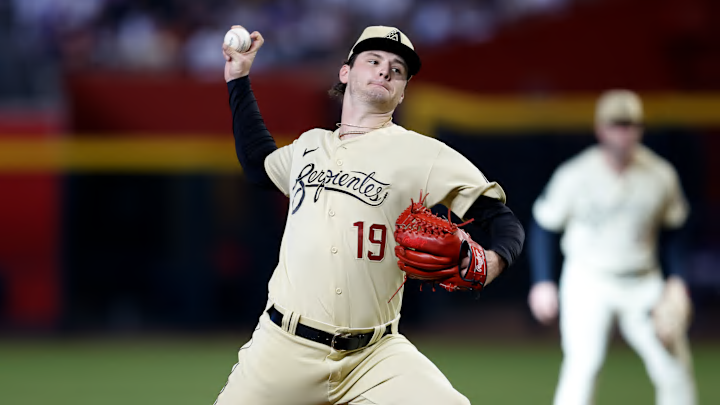Ryne Nelson did not have a great rookie season for the Arizona Diamondbacks in 2023. In 144 innings, Nelson worked to a 5.31 ERA, 5.07 FIP, and 1.42 WHIP. While he had a 7.4% walk rate, he also had a strikeout rate of just 15.5% and home run rate of 1.50-per-9 innings. On top of that, the underlying numbers did not look good either.
Nelson had just a 5.30 xFIP, 5.24 SIERA, 5.27 xERA, and 123 DRA- (he finished the year with a 125 ERA-). Everything pointed to his ERA being pretty close to his ERA estimators. Nelson struggled to prevent soft contact as well, coming in below the tenth percentile of exit velocity (90.8 MPH), and barrel rate (11.6%) and ranking in the 22nd percentile of hard-hit rate (42.7%).
But Nelson was a former second-round pick and was ranked as a top 100 prospect by FanGraphs heading into the year (as well as a top 100 prospect by Baseball America in 2022). What changes could Nelson make to his game right now to potentially break out during the 2024 season?
The first thing is his fastball location. Nelson's fastball sat 94.4 MPH with 2210 RPM. But he threw his four-seamer with an active spin rate of 96%. This gave it some ride in the zone, averaging out with 12.6 inches of drop. But Nelson didn't take full advantage of his fastball's riding life.
How Ryne Nelson can breakout in 2024.
He threw his fastball middle and inward toward the right-handed batters box. One player with an extremely similar fastball is Tanner Bibbe. Bibbe's four-seamer averaged 94.9 MPH with 2210 RPM and 13.9 inches of drop. Bibbe's fastball held batters to a .243 batting average, a .348 slugging percentage, and a .312 wOBA. Meanwhile, Nelson's four-seamer was hit for a .308 average, .553 slugging, and .388 wOBA.
But the difference is Bibbe used his fastball up in the zone more often. He also worked closer to the left-handed batter's box more often compared to Nelson. Aside from his fastball location, Nelson could use both his change-up and slider more often. Both offerings held opponents to a batting average around the Mendoza line and a wOBA below .300. Both also had a whiff rate above 27%.
Nelson's cutter was his second most used offering but was hit just as hard as his fastball. Opponents owned a .312 BA, .516 SLG%, and .378 wOBA when they saw his cutter. This pitch accounted for 14.4% of his total pitches thrown. Meanwhile, his change-up (13.3%) and slider (12.4%) were used less frequently.
Now of course, any significant adjustment like that is easier said than done. But there's definitely some potential in Ryne Nelson. He needs to use what is effective and take advantage of his fastball's qualities. If he can get used to that, he may breakout next season and find himself in the team's starting rotation.
